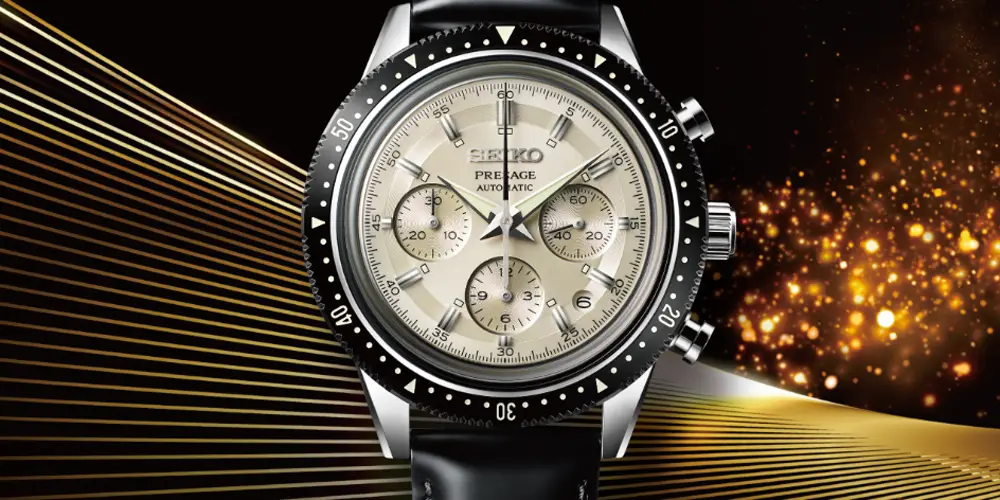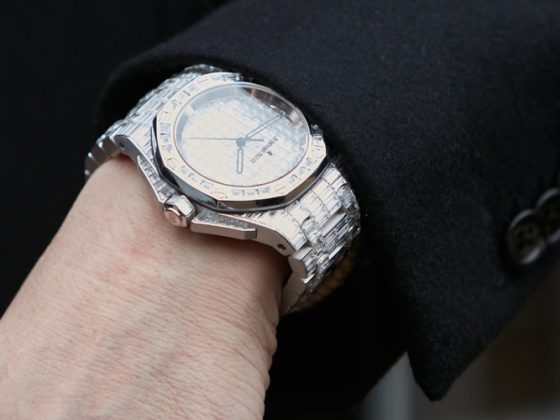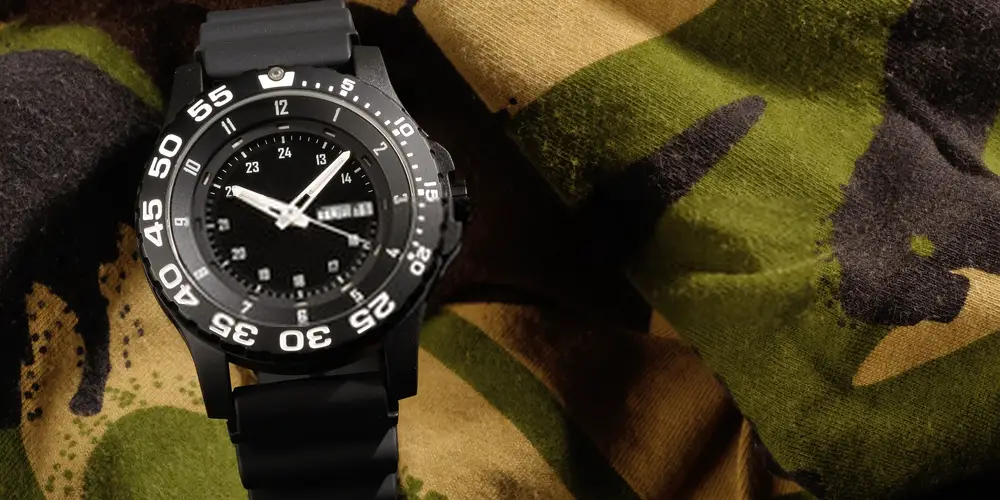[toc]
When anyone says “Japanese movements,” you automatically think “Seiko,” right? And it’s no surprise as to why. Seiko has been manufacturing quality movements, both quartz and mechanical, for years. They are the go-to brand if you want the precision of a Japanese movement combined with a sporty, robust, and distinct design.
Since 1881 Seiko has been a master in creating a staggering range of diverse timekeeping products and is up there with some of the world’s most well-known watch manufacturers. The Grand Seiko and Spring Drive are just two examples of the brand’s excellence in superior watchmaking, but what many don’t know is where it all started, and in particular, how it came to be the developer of the world’s first automatic chronograph movement.
It’s worth noting that all automatic movements created by Seiko are hand-assembled and arranged with meticulous care and attention inside the brand’s manufacturing facilities. They’re then subject to a line of stringent tests to approve of their accuracy and robustness. Its Spring Drive movements are also hand-assembled and entirely made independently from start to finish, albeit in a different manufacturing facility in Japan. In terms of the company’s quartz movements – well, these are, too, made in-house. Seiko grows its own quartz crystals for its quartz movements in a special facility – how neat is that?
Let’s take a journey through the hands of time and explore the milestones accomplished by Seiko in the development of its first chronograph, right through to some of its modern-day timepieces.
Seiko’s Calibre 5719
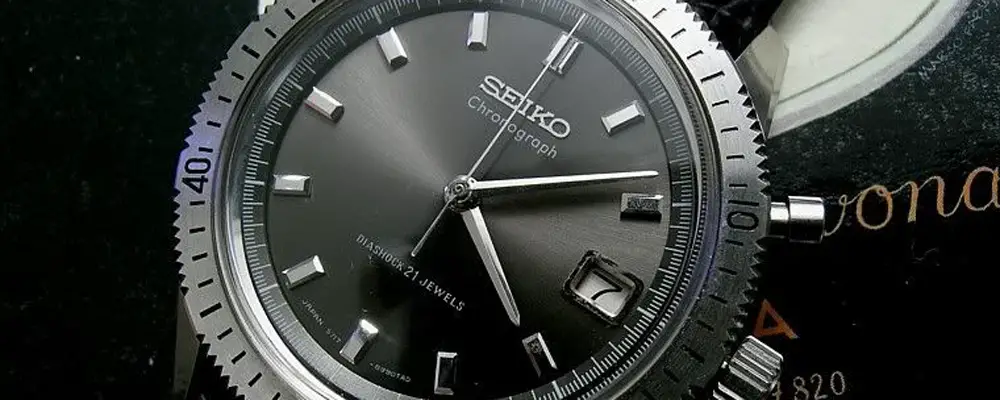
It all started in 1964. The Calibre 1939, you may think? Nope – Seiko’s history in the chronograph movement started a little before that. Seiko actually developed the Calibre 5719 first. The watch launched in time for the 1969 Olympics incorporated a 6.1mm thick hand-wound caliber that, when the chronograph mechanism was switched on, would deliver around 38 hours of power at a frequency of 38,800 vibrations per hour.
It was placed inside a 38.2mm wide case made from stainless steel, which sat on the wrist at 11.8mm in height. It featured a column wheel to control the start, stop, and return-to-zero functions. What made the Seiko Chronograph so interesting is that it had no elapsed time counter to measure anything longer than a minute.
You’d have to align the triangular marker on the bezel with the tip of the minute hand to measure the timing. The elapsed minutes could then be read via the bezel and elapsed seconds via the regular dial.
Later, the Calibre 5718 was released. The stainless steel model that encased this caliber was a limited edition, which makes it an incredibly rare piece to come by on the second-hand market today. It features a golf stroke that is operated by the two push-buttons located on the left-hand side of the case. The sub-dial at 6 o’clock is an elapsed minute counter and a running seconds display all in one, framed by a tachymeter scale around the edge of the dial.
Seiko’s Calibre 6139

The Calibre 6139 was Seiko’s first self-winding chronograph, which took around two years to develop. Seiko worked on the concept of the self-winding chronograph while the rest of the Japanese watch industry was focusing on the popular quartz. It incorporated Seiko’s Magic lever (enabling the kinetic energy to be utilized regardless of whether the rotor turned clockwise or anticlockwise), which is still used in the company’s watches today.
This part of the mechanism worked in conjunction with a centrally mounted rotor. It performed at a rate of 21,600 vibrations per hour – a cut above the standard 18,800 VPH What made this Seiko Chronograph so remarkable was a bilingual (Japanese and English) day-date feature at 3 o’clock.
Seiko did beat cutting-edge brands like Breitling, Zenith, and Dubois Dépraz to it. The first automatic chronograph was released in 1969 – a ground-breaking revelation that Seiko can proudly look back on. The real significance lay in the fact that this movement combined a vertical clutch with a column wheel, enabling the watch to deliver complete precision. It was an important and integral aspect of a high-grade chronograph of that era.
Seiko’s Calibre 7017

Incorporating Seiko’s innovative Magic Lever, a vertical clutch, and a column wheel, the brand set a world record with the next movement – the Calibre 7017. The new and incredibly thin movement encompassed all the qualities of the Calibre 6139 but offered new features like a “creeping hand” that would tally the watch’s elapsed minutes inside a record-breaking slim construction.
The fact that the Seiko Calibre 7017 was designed with fewer components enabled it to sit inside a much more discreet case size. There were compromises made, however. The Calibre 7017 would forego the elapsed minute counter. Digital day and date displays were used in watches powered by this movement, which launched in 1970.
Just a year later, Seiko released the Calibre 7018 chronograph movement, which featured a 30-minute counter. It would pave the way for the following two movements introduced by Seiko the next year: the Calibre 7015 and Calibre 7016.
Two concentrically rotating hands feature on the 6 o’clock sub-dials on these designs for elapsed minutes and running seconds. Coinciding with the quartz crisis which would take the world by storm during the 1970s, Seiko seized production of its mechanical movements after discontinuing their “70’s Series” calibers.
Seiko’s 6S Calibres
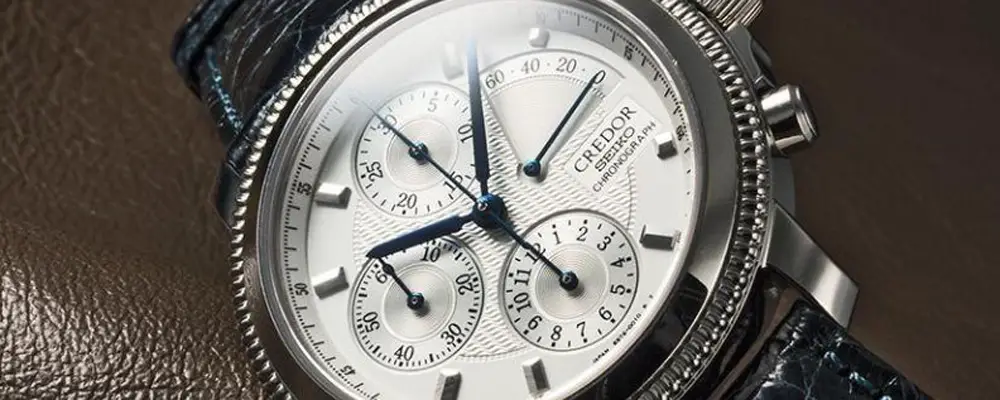
Towards the end of the quartz crisis, Seiko resumed its manufacture in mechanical chronograph movements. Some of the brand’s expert engineers and highly skilled craftsmen had already retired at this point but had agreed to return to their line of work to help launch this important project for Seiko. In 1998 Seiko produced two calibers intended for the Japanese market.
The first – the hand-wound Calibre 6S74 measured 28.4mm in diameter and featured a 60-hour power reserve. The 5.8mm thick movement performed at a rate of 28,800 vibrations per hour. This project was one of Seiko’s largest and most major projects. Design-wise, it had no date window but featured a 30-minute counter and a 12-hour counter, as well as a useful power reserve indicator.
Creating this modern and advanced movement formed the base of a family of Seiko movements that would go on to prove that the brand had what it took to become a true competitor within the horological world.
The 7.2mm thick Calibre 6S77 launched in 1999. It was equipped with a Magic Lever, a 50-hour power reserve, and a date display. In the same year, Seiko’s 6S78 was released, but its skeletonized version didn’t appear on the market until 2000. It was used for the Credor Phoenix Chronograph, which was produced up until 2004. Seiko’s high-end Prospex Flightmaster, model SBDS001 launched in 2001.
It would house the Calibre 6S37 inside it, which added a power reserve indicator at 2:30. The high-end Credor mechanical chronograph version, developed in 2002, was powered by yet another member of the 6S series – the Calibre 6S99. It combined impeccable accuracy with a gold-plated skeletonized design.
After the 6S28, which launched in 2005 to power models like the Brightz chronograph SAGP (which ceased production in 2007) and the Brightz Phoenix chronograph SAGH (2008-2013), the Calibre 6S96 followed. It marked the final variant from the 6S series. Even though the 8R series was launched after this line and came with a newer family of chronograph movements (equipped with innovations like a vertical clutch instead of the oscillating pinion), the 6S is still considered more high-end.
Interesting fact: Seiko sold its 6S78 movement to Junghans and other third parties who renamed it. TAG Heuer also purchased the movement, modified it, and rechristened it with the name “Calibre 1887.”
Seiko’s 8R Calibres

The Seiko Ananta, created in 2009, marked a pivotal point for the company. Its luxurious design made from high-end materials and a distinct aesthetic geared itself towards those who truly understood and appreciated the art of fine watchmaking. Its supreme design is incredibly comfortable to wear and houses quality engineering at its heart—the concept behind the design centered around providing the wearer with a lifetime of joy and satisfaction.
Of course, to do this, Seiko had to work on a cutting-edge movement that would stand out. The Calibre 8R28, which belonged to the 8R series was equipped with a column-wheel Magic Lever winding system, and vertical coupling (for efficient and quick gear changes). A three-pointed hammer was also incorporated into the movement to ensure the chronograph counters returned to zero after a measurement.
With a 45-hour power reserve and an in-house balance spring and escapement, the cutting-edge movement was met with resounding success as watch lovers worldwide invested in models powered by this engine. Each one was meticulously tested and hand-assembled in Seiko’s manufacturing facilities.
The Seiko Ananta Chronograph (for which the Calibre 8R28 was designed for), features red chronograph hands for easy detection as well as a GMT function. The push-pieces on the side of the case are easy to press. Plus, the movement has some nice finishes aside from being beautifully decorated. It also boasts a polished black katana-style exposed rotor.
In 2011 Seiko produced the Calibre 8R39, which was specifically tailored to equip dive watches. Models like the Seiko Ananta Automatic Chronograph Urushi Diver Ref. SRQ013 Limited Edition watch boasts several exquisite details like a hand-done Urushi lacquer. Urushi is a natural tree sap considered a national tradition to use for lacquering.
To minimize too many features on the dial of this limited edition Ananta Dive watch, Seiko chose to keep the dial’s layout simplistic and understated. Large dive hands and indicators join an easy-to-read chronograph dial. The Calibre 8R39 sitting inside the watch’s case featured nice decoration. However, as this was a dive watch, the movement was hidden away behind a solid, engraved caseback.
Seiko’s Calibre 8R48 followed in the footsteps of the 8R39 in 2014. It was used in the Brightz models sold only in Japan. The Calibre NE88A, which was also released in 2014, uses a column wheel taken from Seiko’s TMI collection. Third parties have utilized this movement in their designs, taking full advantage of Seiko’s signature triple-tipped hammer, which simultaneously resets all of the sub-dial hands at once.
It was designed to be an affordable replacement for the 7750 Valjoux movement. Courtesy of a vertical clutch and column wheel, the movement promises a much smoother tactile feel than the Valjoux 7750’s hard clicking horizontal cam lever chronograph, making it an appealing choice for many Swiss watch manufacturers who source their movements externally.
This quick introduction to Seiko’s historically significant involvement in the development of the chronograph movement should serve to educate you on what the brand stands for. As well as developing collection-after-collection of innovative wristwatches – from sporty and dynamic to timeless and classic – the brand stands for perseverance and determination. Seiko is also a true contender for the Swiss watch market, demonstrating that sophisticated and highly-capable chronograph watches don’t have to break the bank.

